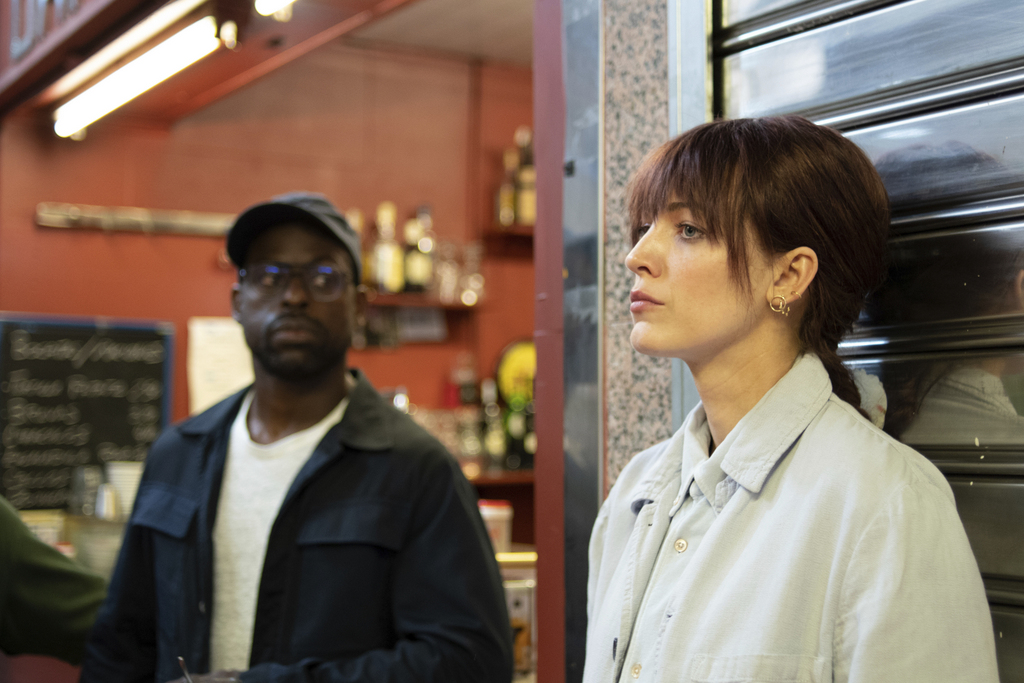[ad_1]
By Dwight Brown NNPA News Wire Film Critic
They tried to conjure the spirits of La Femme Nikita and Atomic Blonde. They didn’t try hard enough.
Tangier, Marseilles, New York, Madrid… Blood is spilled and bodies are found in apartments, houses and buses on several continents in this revenge mystery/thriller. What’s all the commotion.
Two-hundred thirty-nine passengers perish during a plane crash. An investigative journalist, Keith Proctor (Raza Jaffrey, Homeland), tracks down a member of one of the families who died on flight NE027. Stephanie Patrick (Blake Lively, The Town), a drug addict and a prostitute, is shocked to learn that the tragic incident was the result of a bomb. Proctor knows who’s responsible. He knows the players. Stephanie: “Why did you come for me?” Proctor: “You’re another victim. You’re just not dead yet.”

Before anyone can, say, “Where is my Glock 19?” the lady of the night is training with a mysterious ex-MI6 agent Boyd (Jude Law) to become familiar with the fine arts of espionage, weapons and assassination. Memories of her mom, dad and siblings haunt her. She’s seeks vengeance. Unfortunately, her skills and killer instincts don’t match up with her will. Is she even capable?
Novelist Mark Burnell turned his bestselling book into a screenplay. Not much is lost in the screen adaptation. Stephanie, as the unlikely protagonist, does just enough to pull you into her plight. You’ll want to see if she can step up and do the unconscionable to the deplorables.
Pity her transformation from hooker to slayer in a 30-day window doesn’t add up. It’s an unlikely transformation, implausible, improbable at best. If she had started out as a former spy, soldier, markswoman, decathlete—something—you might believe she could turn herself into a fight machine. There is nothing on view that shows she can do the job. The film embraces her ineptness, making it part of her persona. But her bumbling executions wear thin fast. It’s a device that might have worked in the novel. On screen, she just looks feeble.
Guiding the actors and tech crew through the process is Reed Morano, the Emmy-winning director of the very evocative Prime Video series The Handmaid’s Tale and Starz’s show Power. She made a name for herself as a cinematographer with TV projects (Beyoncé Lemonade). Evidence of her visual flare is in the film’s look and footage.
Shots of international cities and landscapes (cinematographer Sean Bobbitt, 12 Years A Slave) look spectacular. The camera loves close-ups of characters, chest and up. Jittery, arty camerawork follows Stephanie as she runs down streets. Overall color choices (art director Didac Bono), costumes (Eimer Ni Mhaoldomhnaigh, The Fall), production design (Tom Conroy) and set decoration (Crispian Sallis) are unquestionable and fit the locations and genre.
If this film wanted to be included in the same breath as top espionage movies (e.g.The Bourne Identity, Carlos) or impress action/thriller fans, it needed intriguing action scenes with dazzling choreography. Fights, gun battles, car chases—those are the staples of these types of films, and unless you get them right, or climb to new heights, they become liabilities. Stephanie’s exploits are never amazing, uncanny. The exception may be the climax of the film, which upon afterthought is ironic and cathartic.
Blake Lively is a strong actress, which she evidenced in the movie The Town. However, she never rises to this occasion, or brings her menace up to a level that would threaten anybody. Anne Parillaud did in Luc Besson’s La Femme Nikita. She blazed a trail. The other actress who bitch-slapped the genre is Charlize Theron in Atomic Blonde. Her interpretation of Lorraine Broughton, an undercover MI6 agent, is classic. That character is a badass killer who can take a bullet with the best of them, then gun you down. Since Lively never takes her role to that edge, the entire film suffers.
Raza Jaffrey fairs well as the brave journalist. Jude Law has been better in other films and does little to leave his mark on the rogue agent. There is a scary calmness to Tawfeek Barhom’s (Mary Magdalene) portrayal as the suspect Reza. Sterling K. Brown, as an information go-between tied to terrorists and spy agencies, doesn’t make his character stand out. This is the kind of role actors like Denzel Washington, with his acting bravura, would make unforgettable.
It should be noted that the film’s basic theme of terrorist bombings has an anti-Arab overtone that is hard to shake. Even if a lot of the most evil players are non-Muslim, still, something doesn’t feel right.
As the film careens towards its ending, 1h 49min rolls by pretty quickly (editor Joan Sobel, Nocturnal Animals). Were it not for an incessant series of flashbacks of the Patrick family to remind audiences of Stephanie’s torment, when really Lively’s pained facial expressions are adequate, the film’s pacing would be just about right. You stay engaged for the most part. Waiting and waiting for those scenes that will separate this movie from the next. They never arrive.
It’s said that the difference between modern dance and ballet is that one is all about the movement and the other is about position and image. Reed Morano is accustomed to shooting series that are all about the lasting visual impression. Thrillers tend to be more about actions and mind boggling incidents. If Morano can make that adjustment, with her strong sense of design and affinity for drama, her future films in this genre would be more fun to watch.
Visit NNPA News Wire Film Critic Dwight Brown at DwightBrownInk.com and BlackPressUSA.com
[ad_2]
Source link
